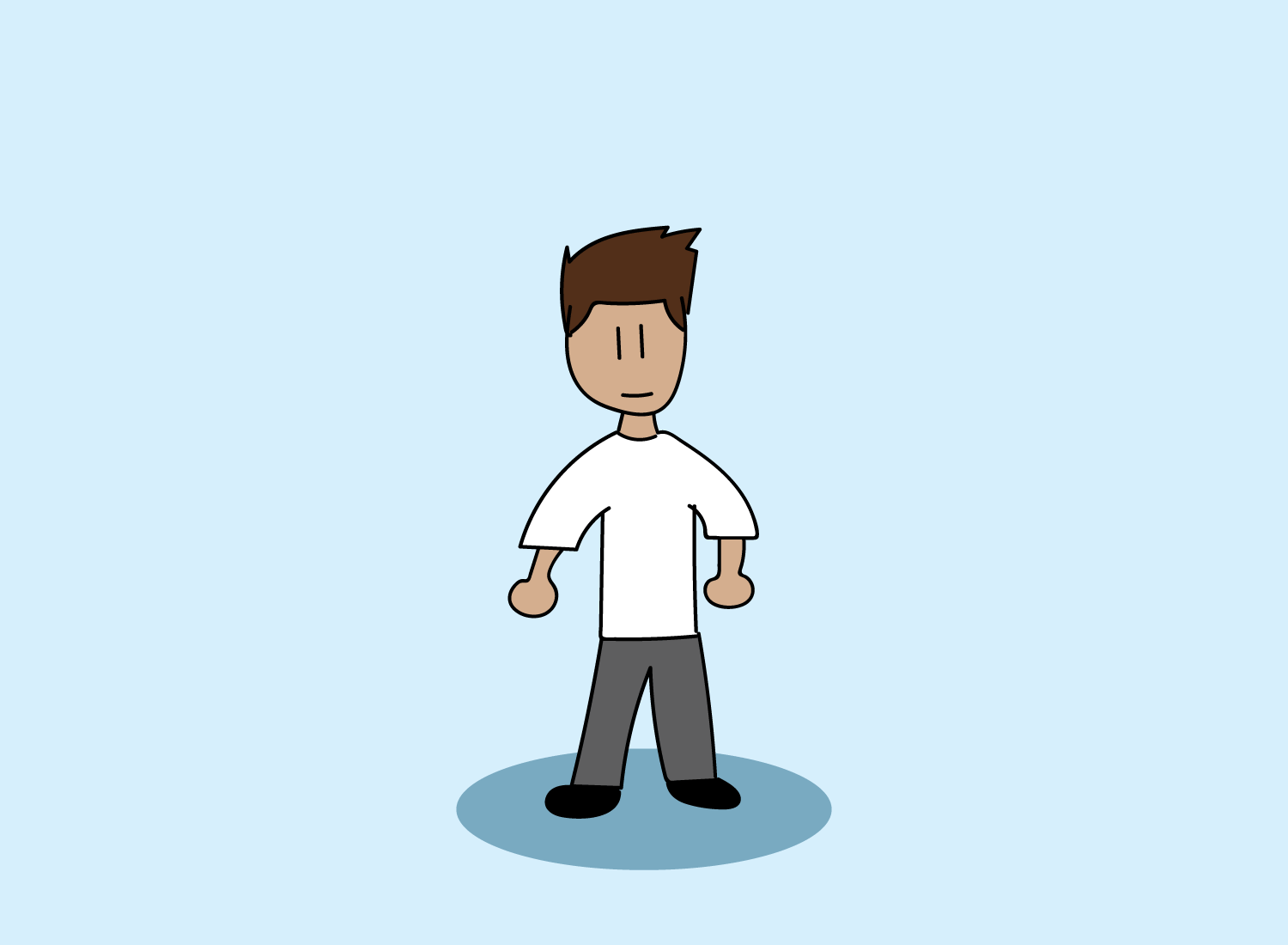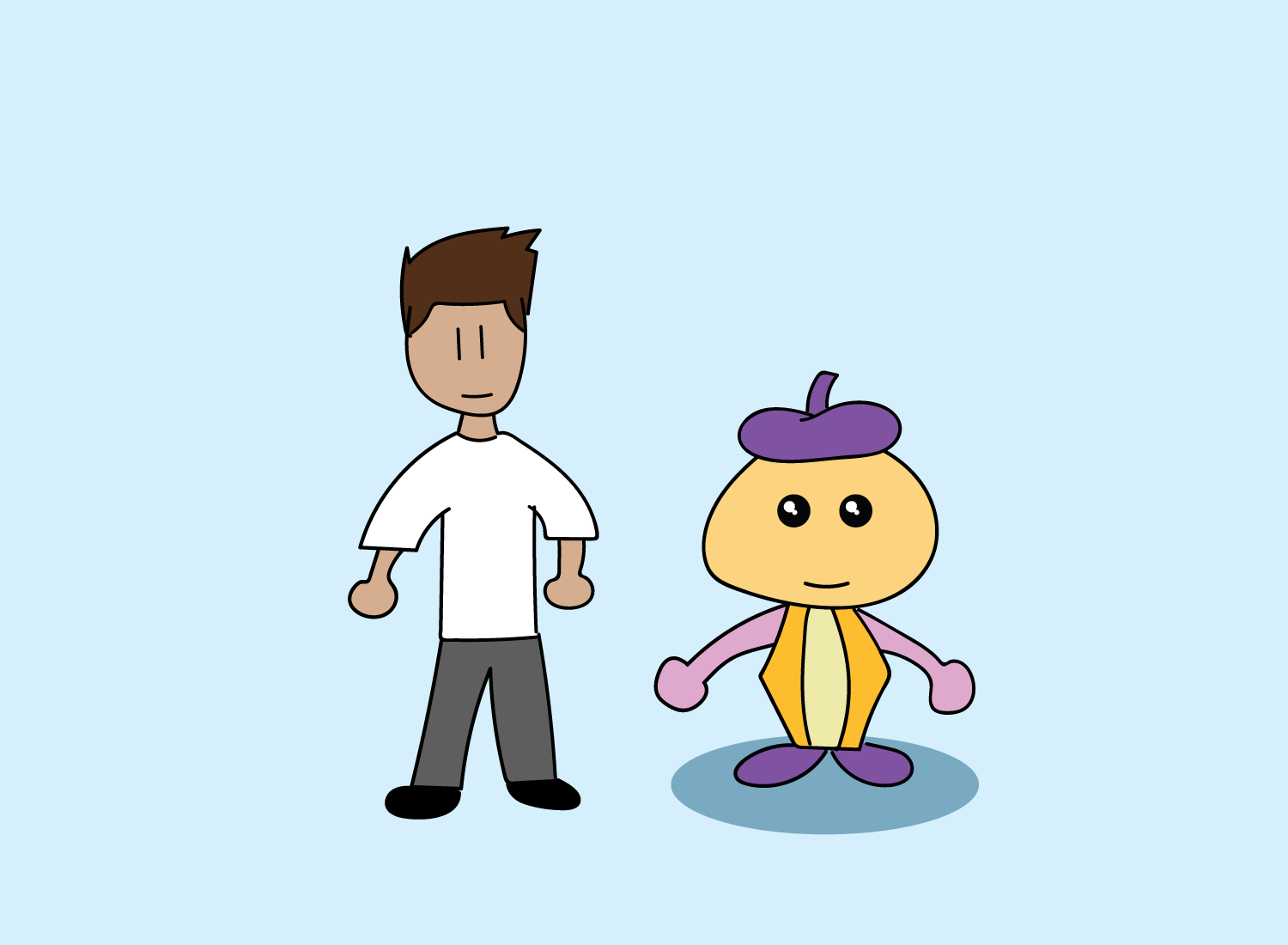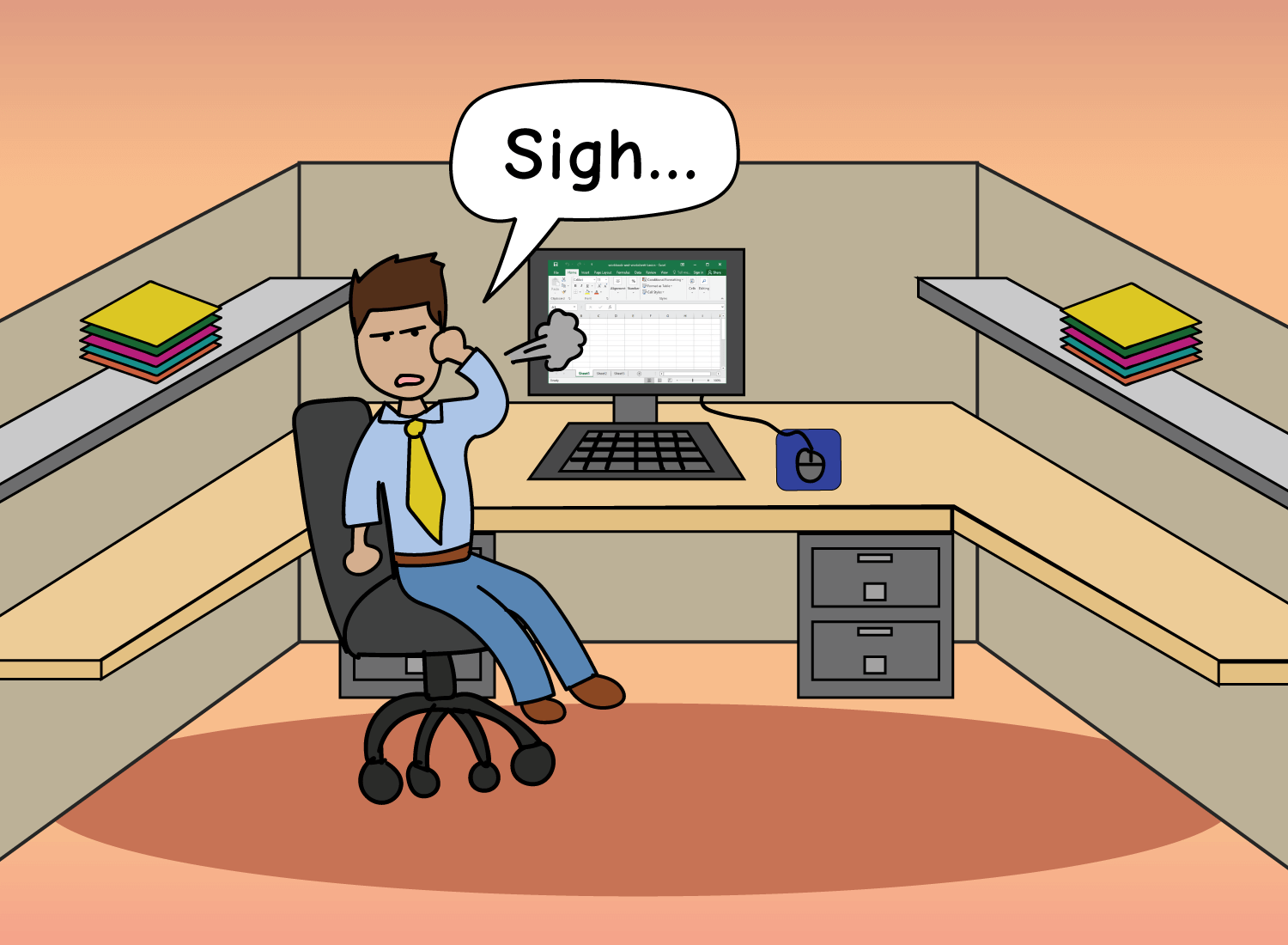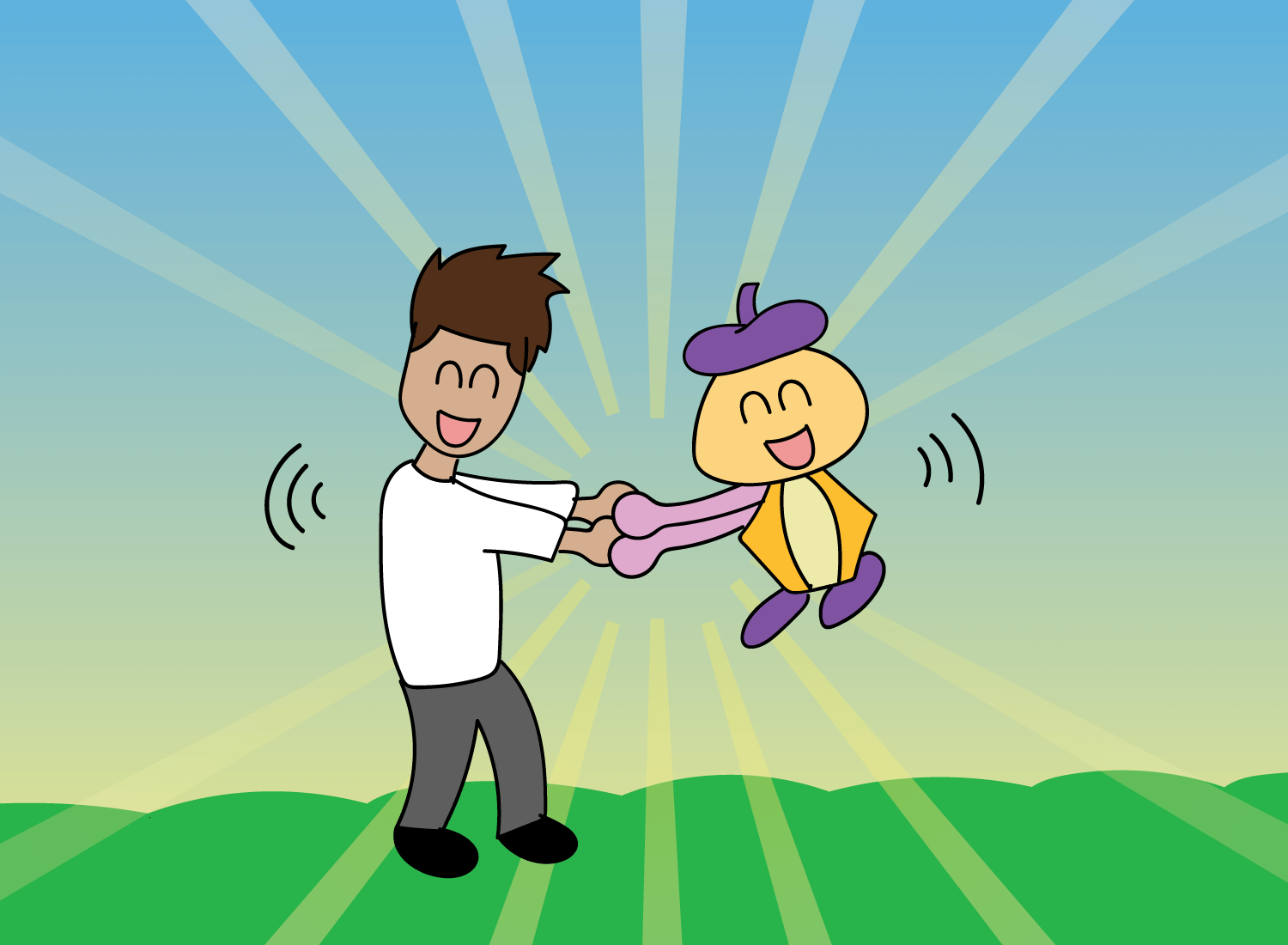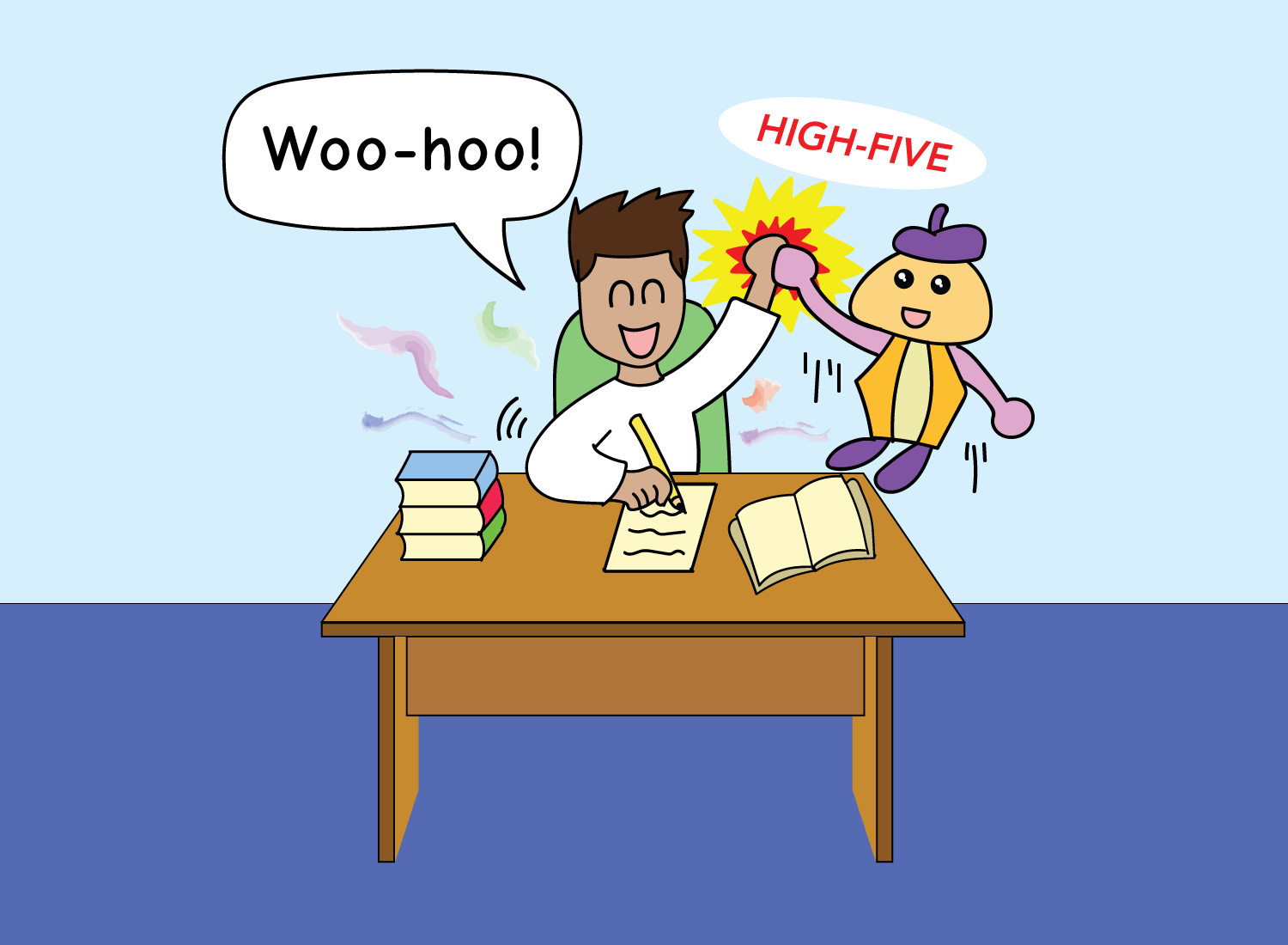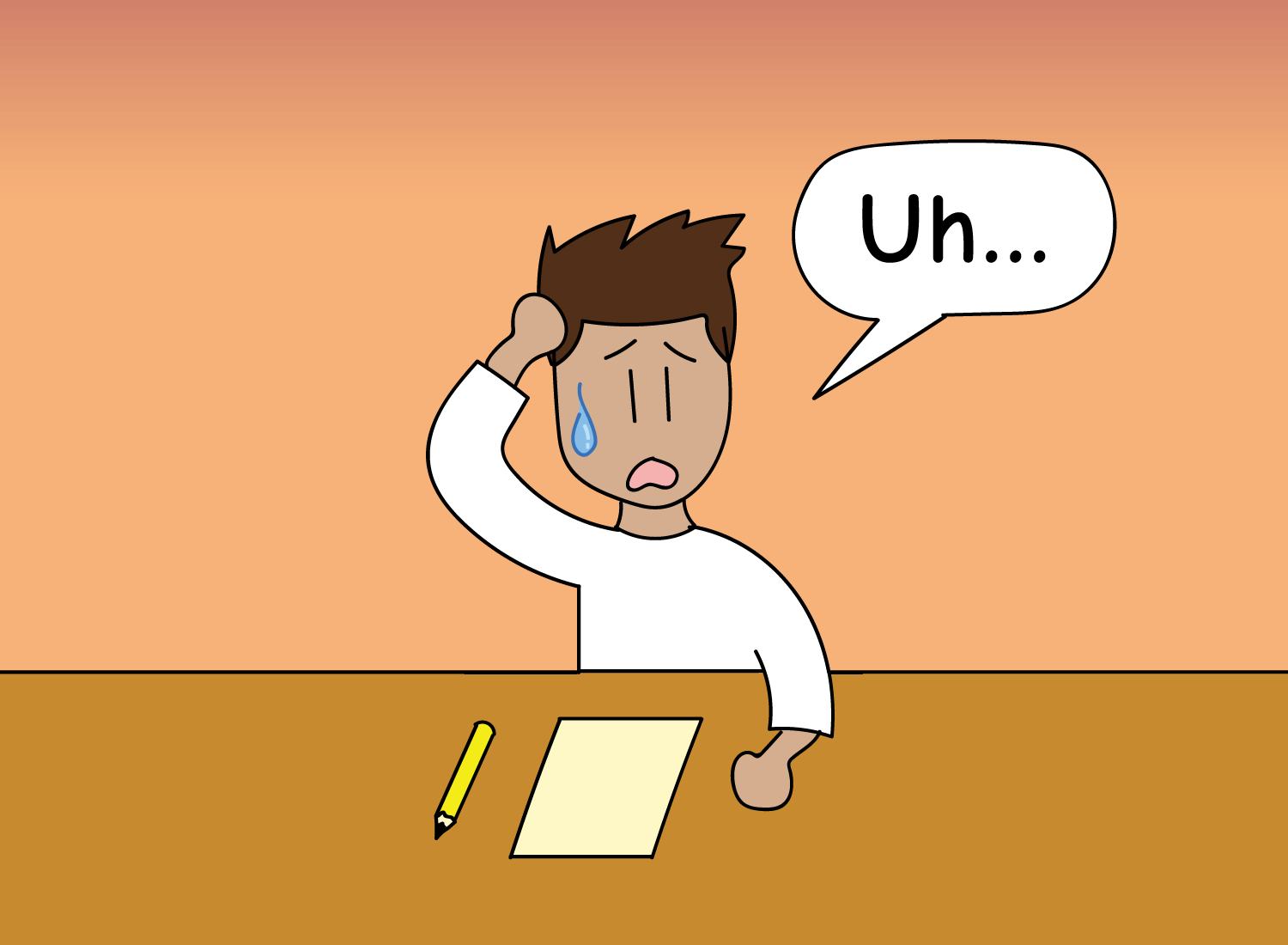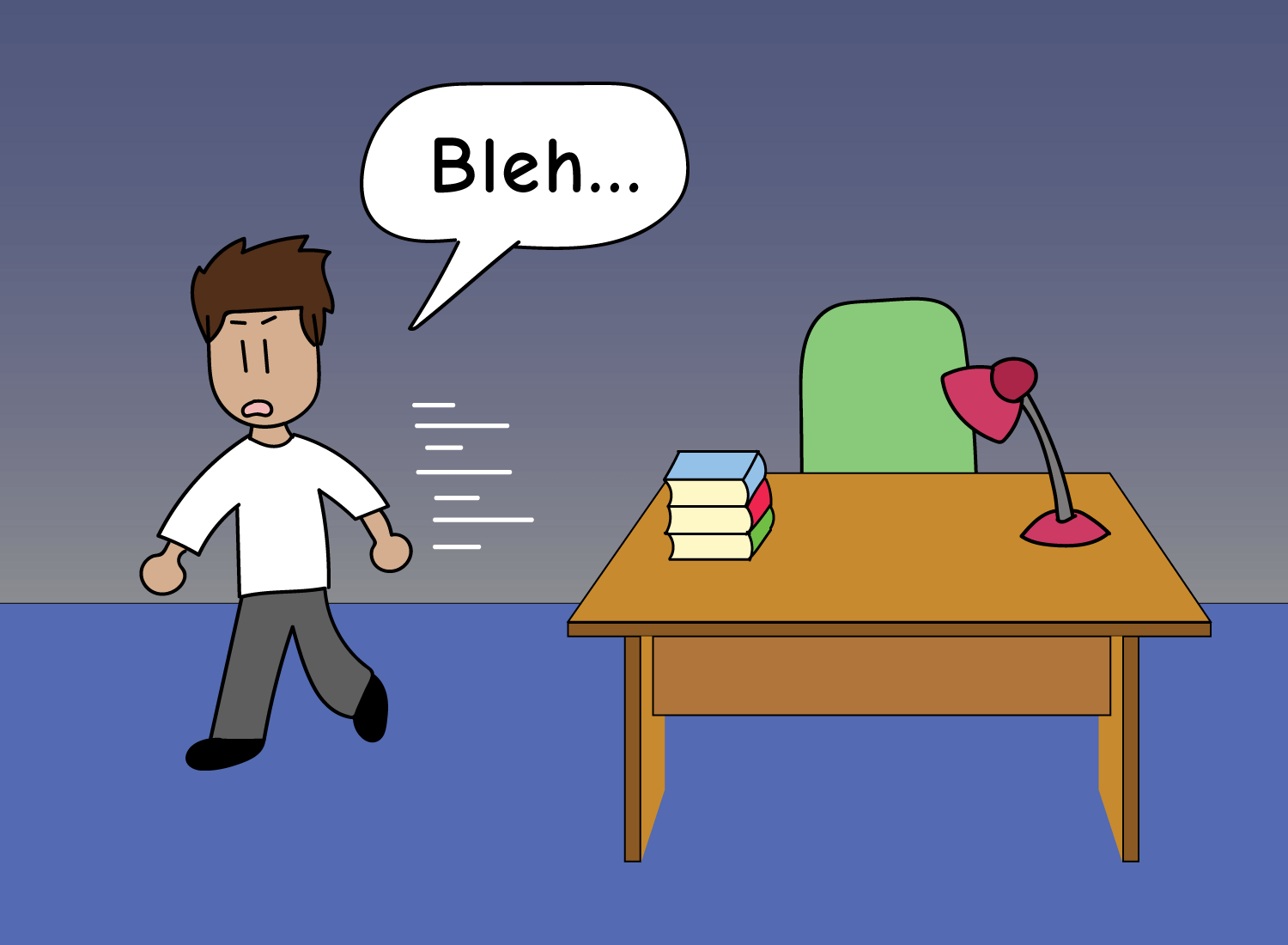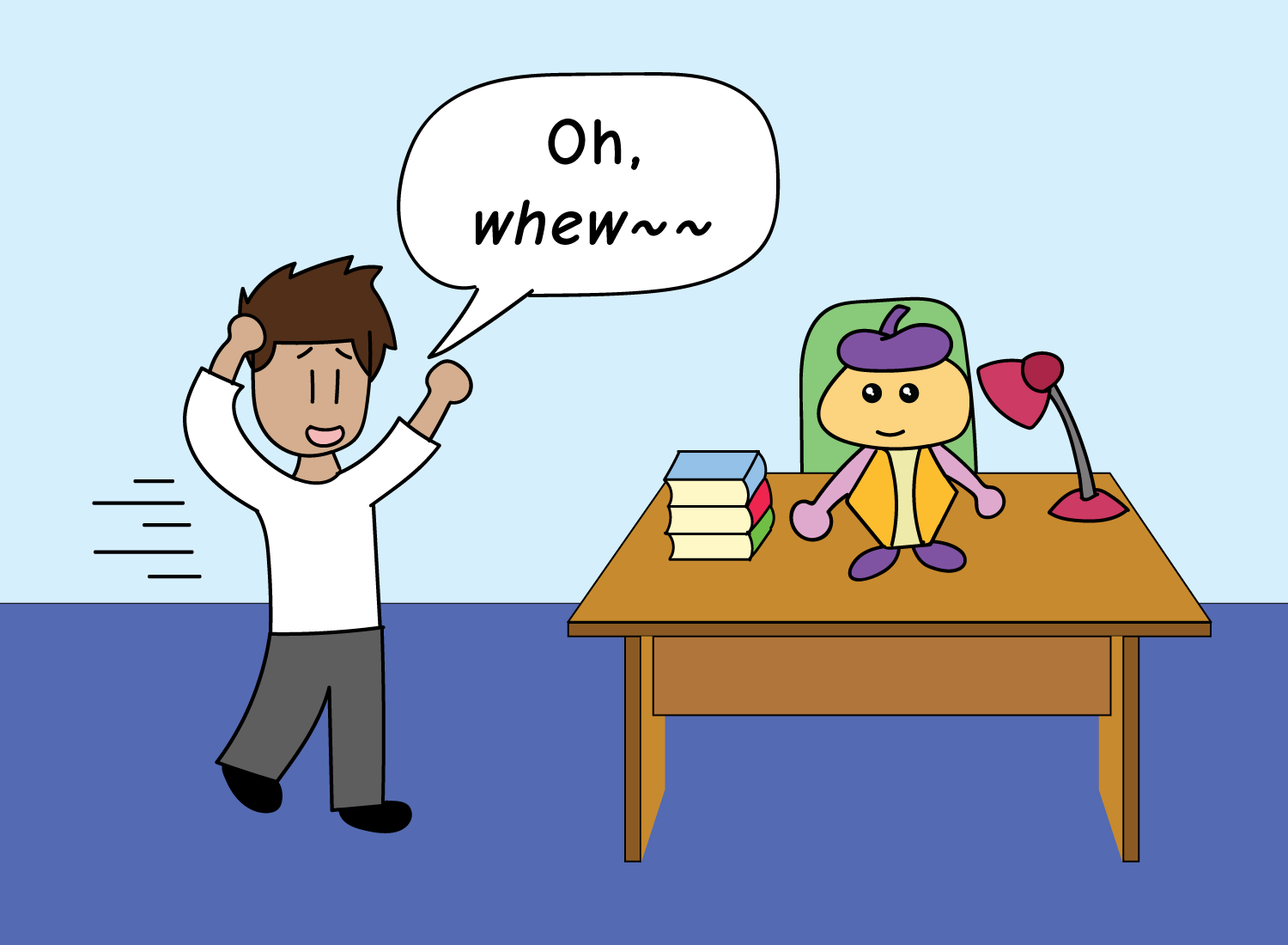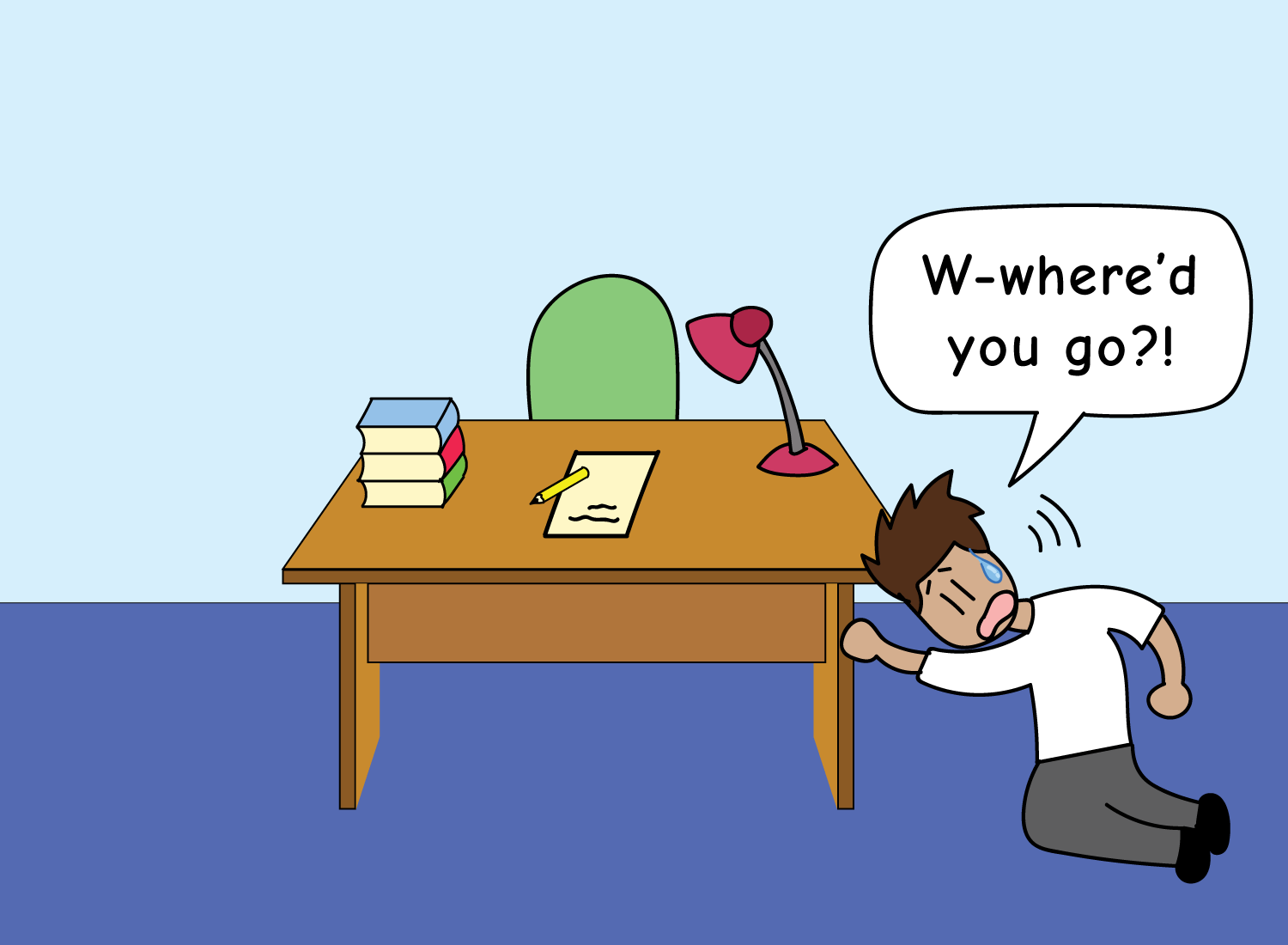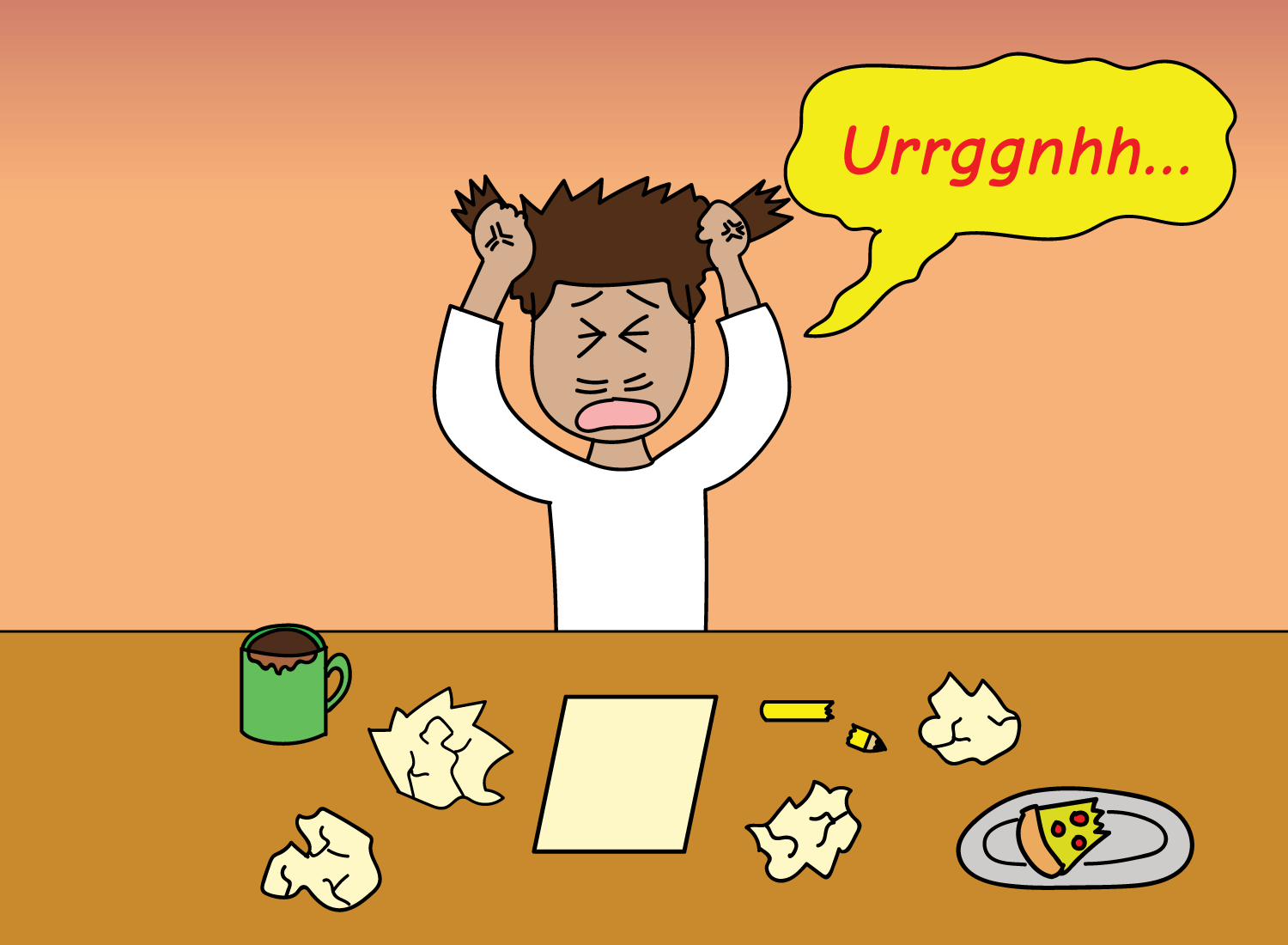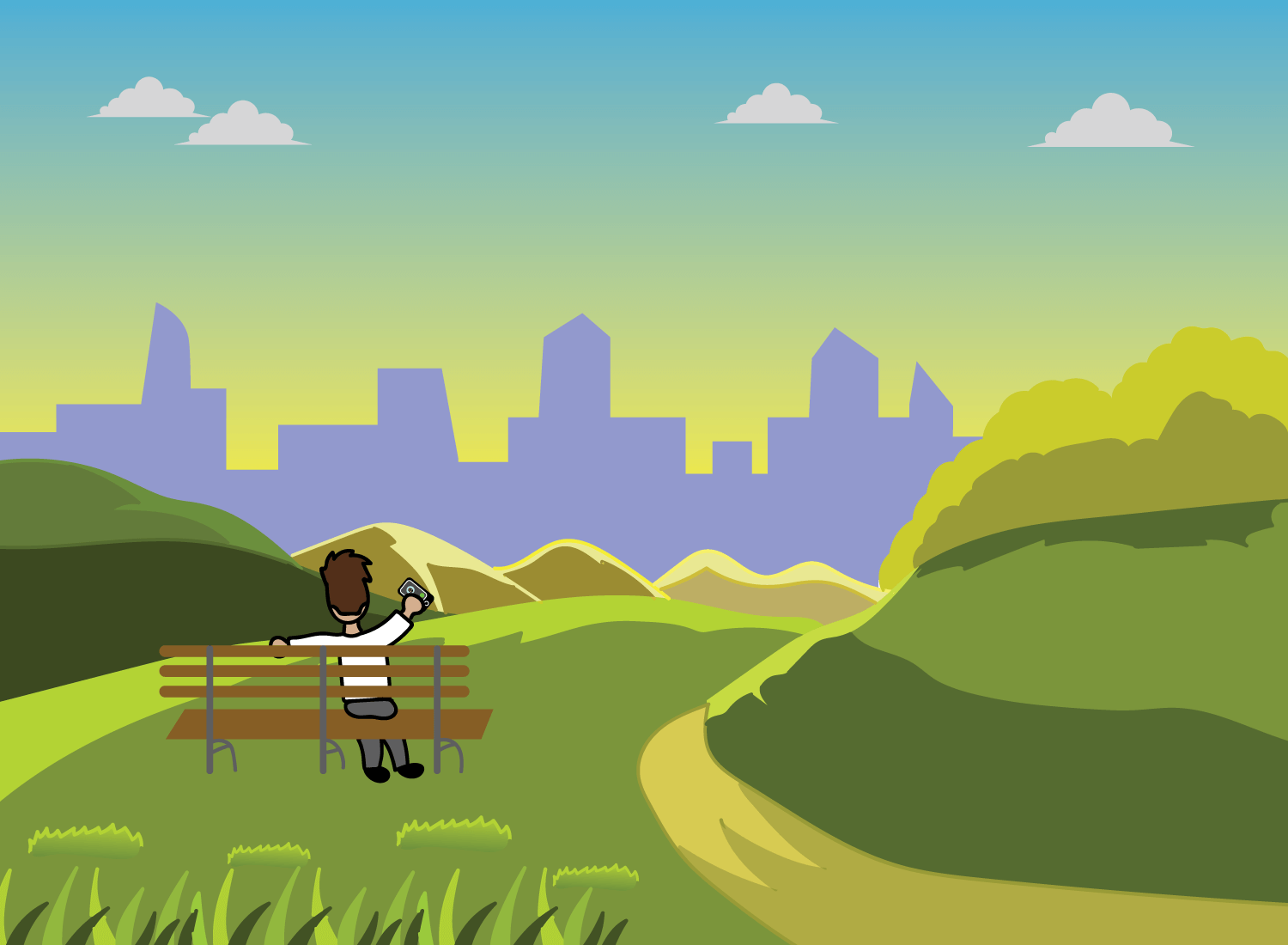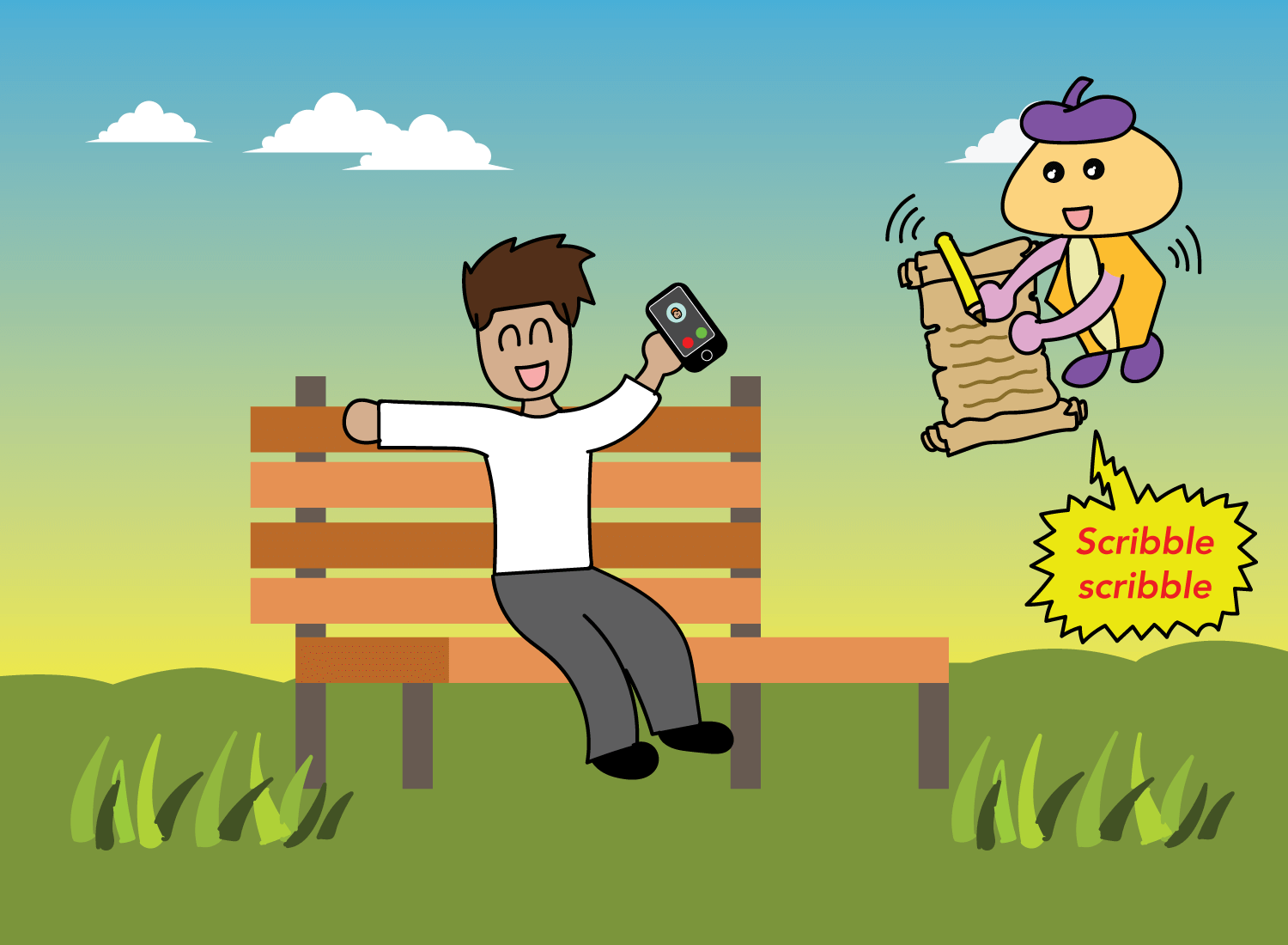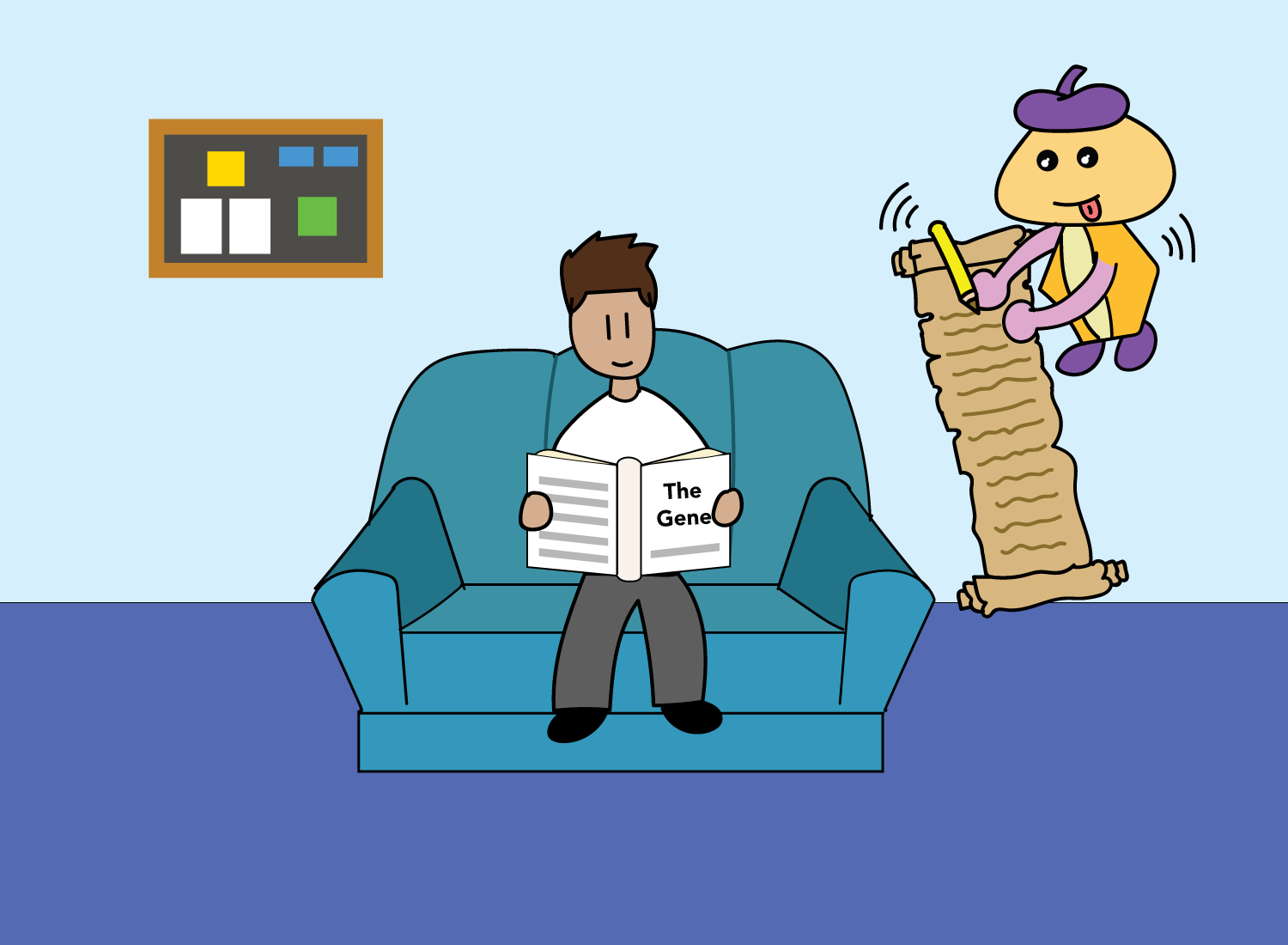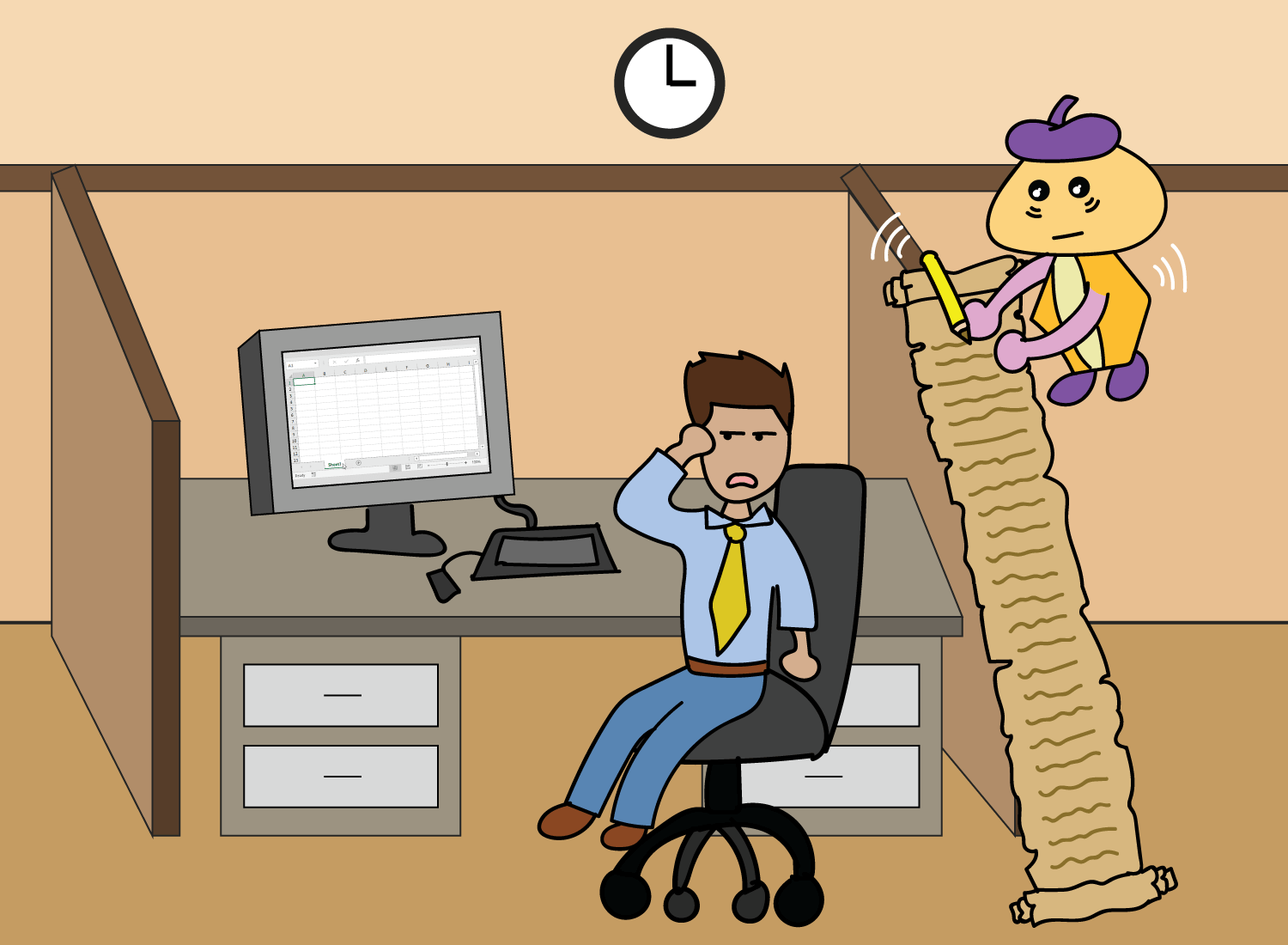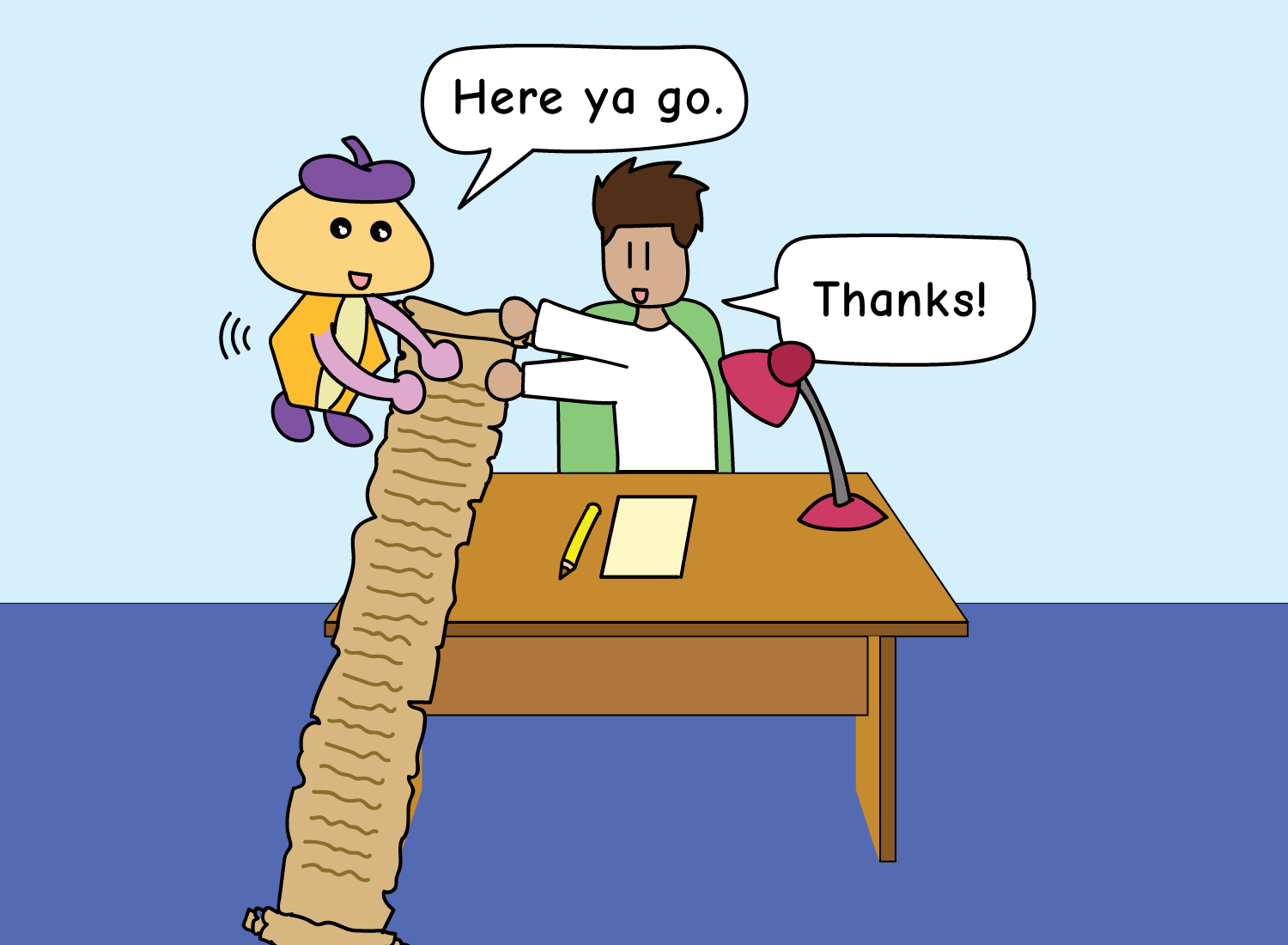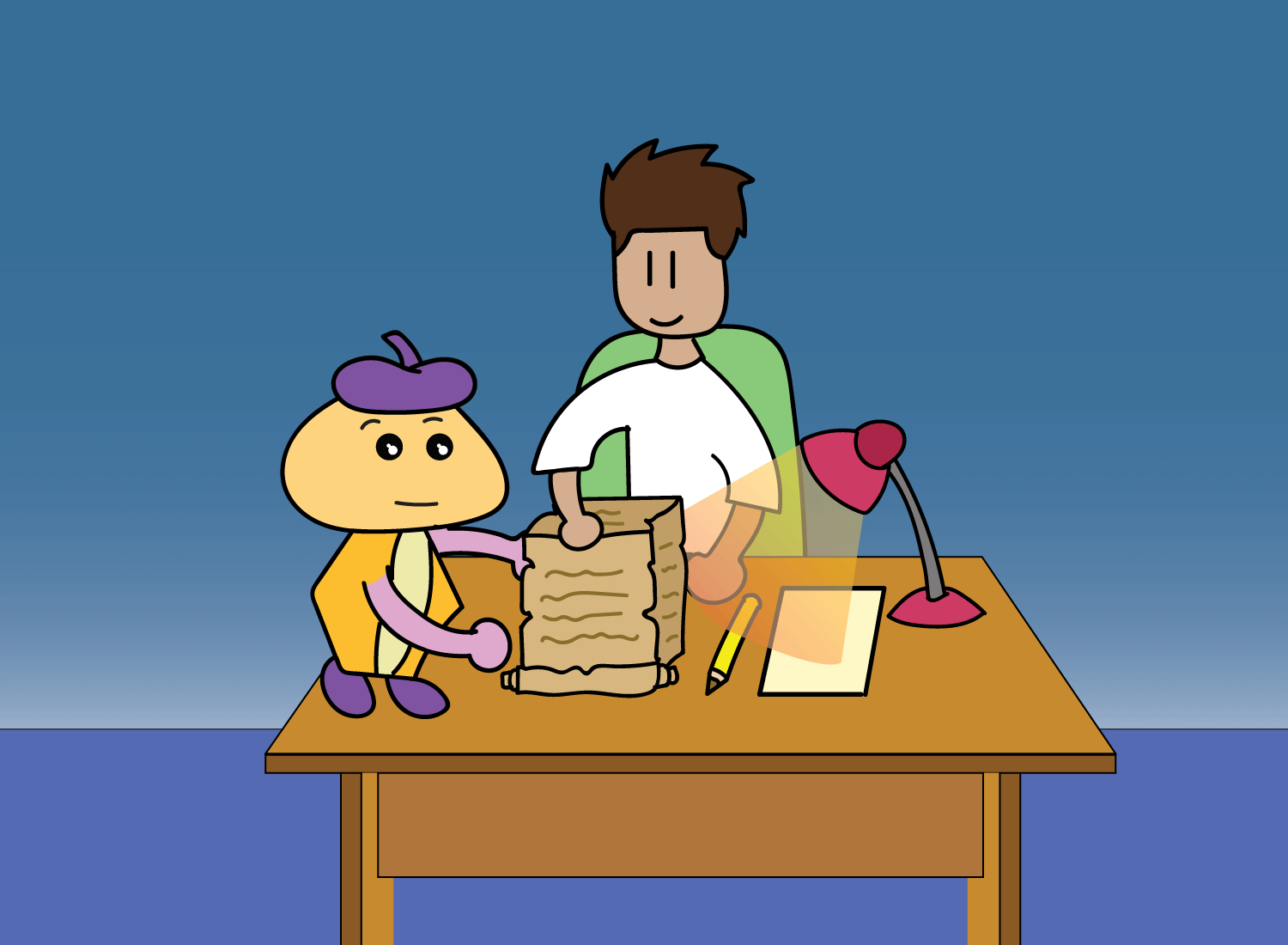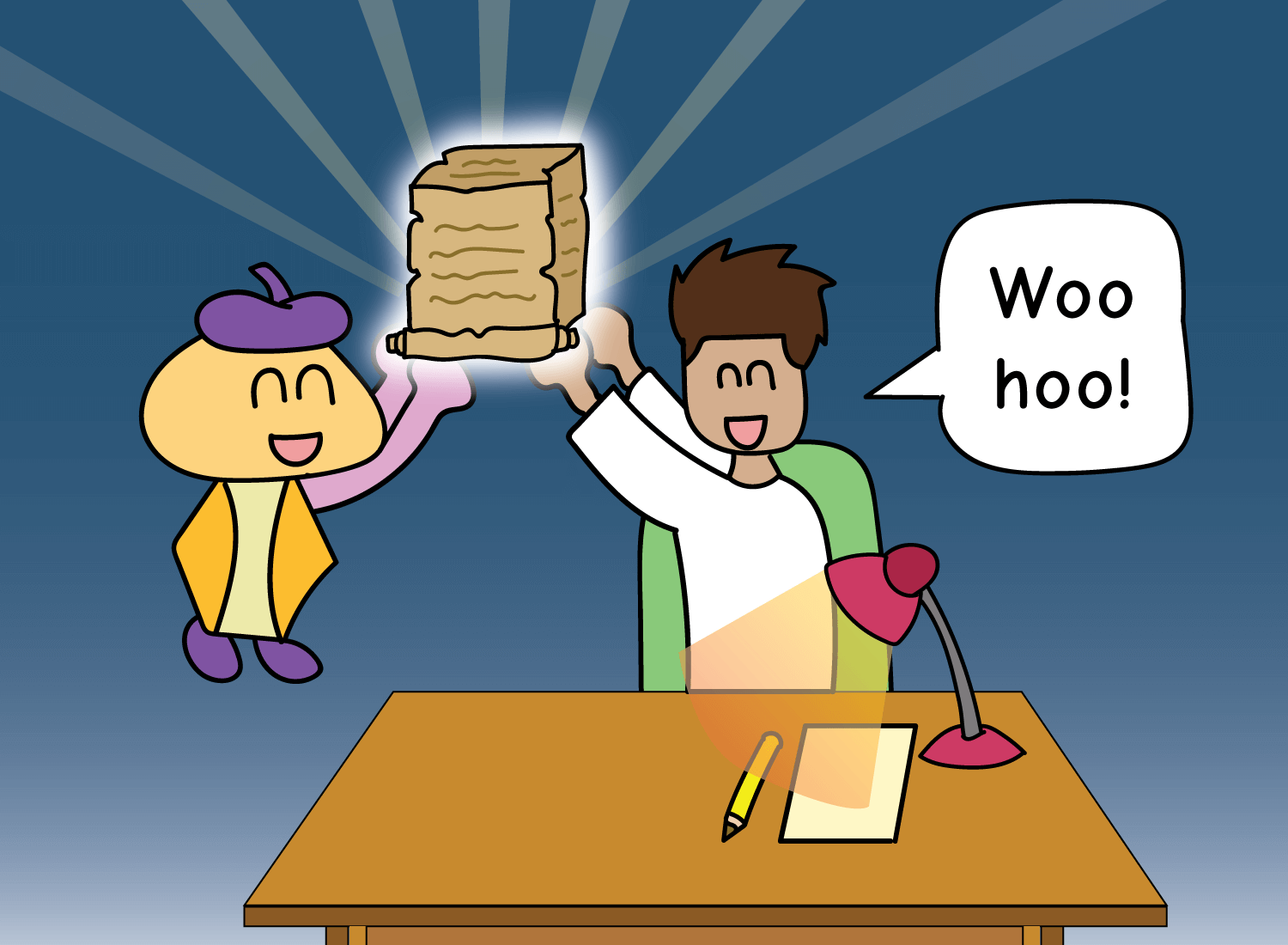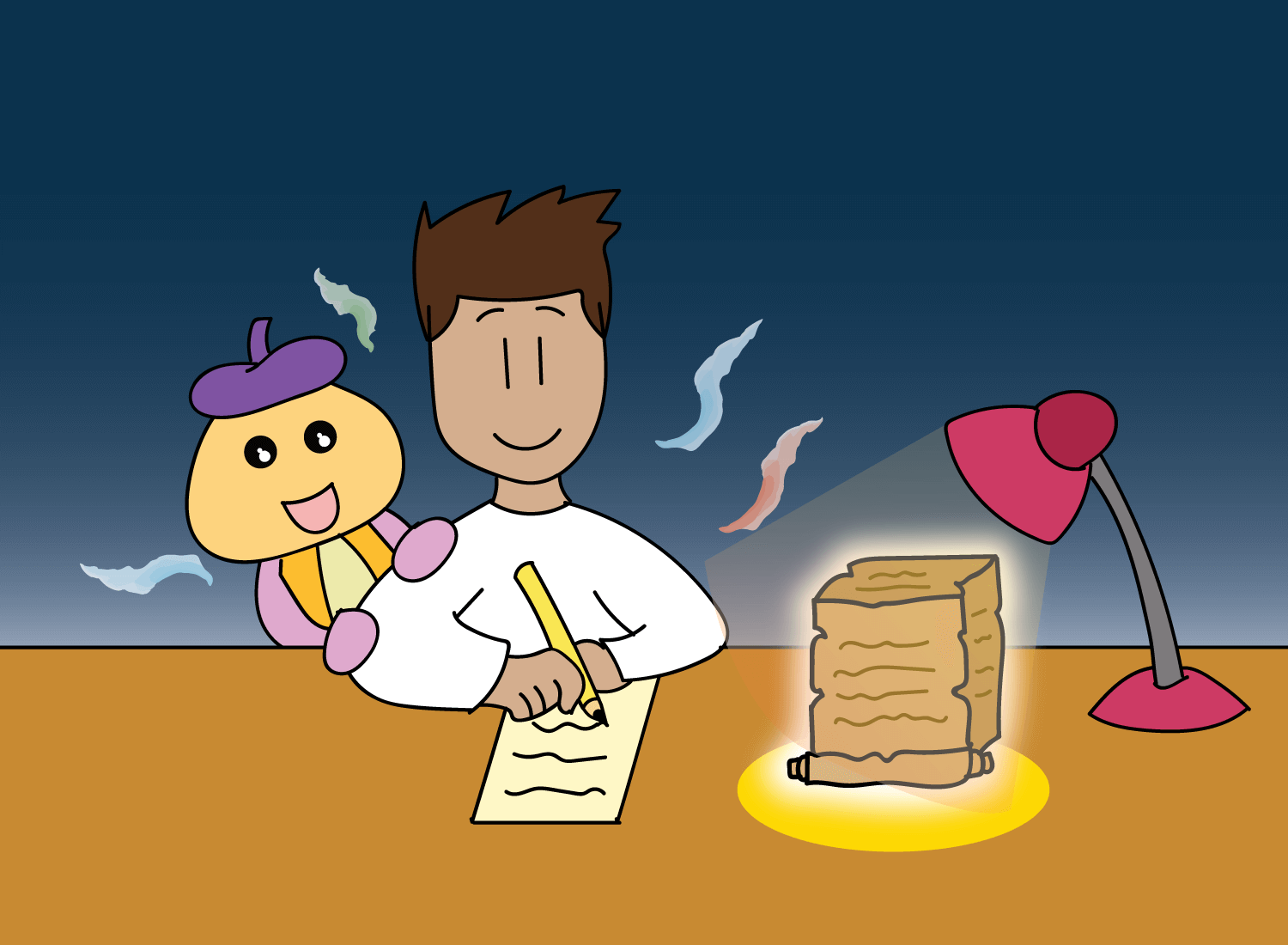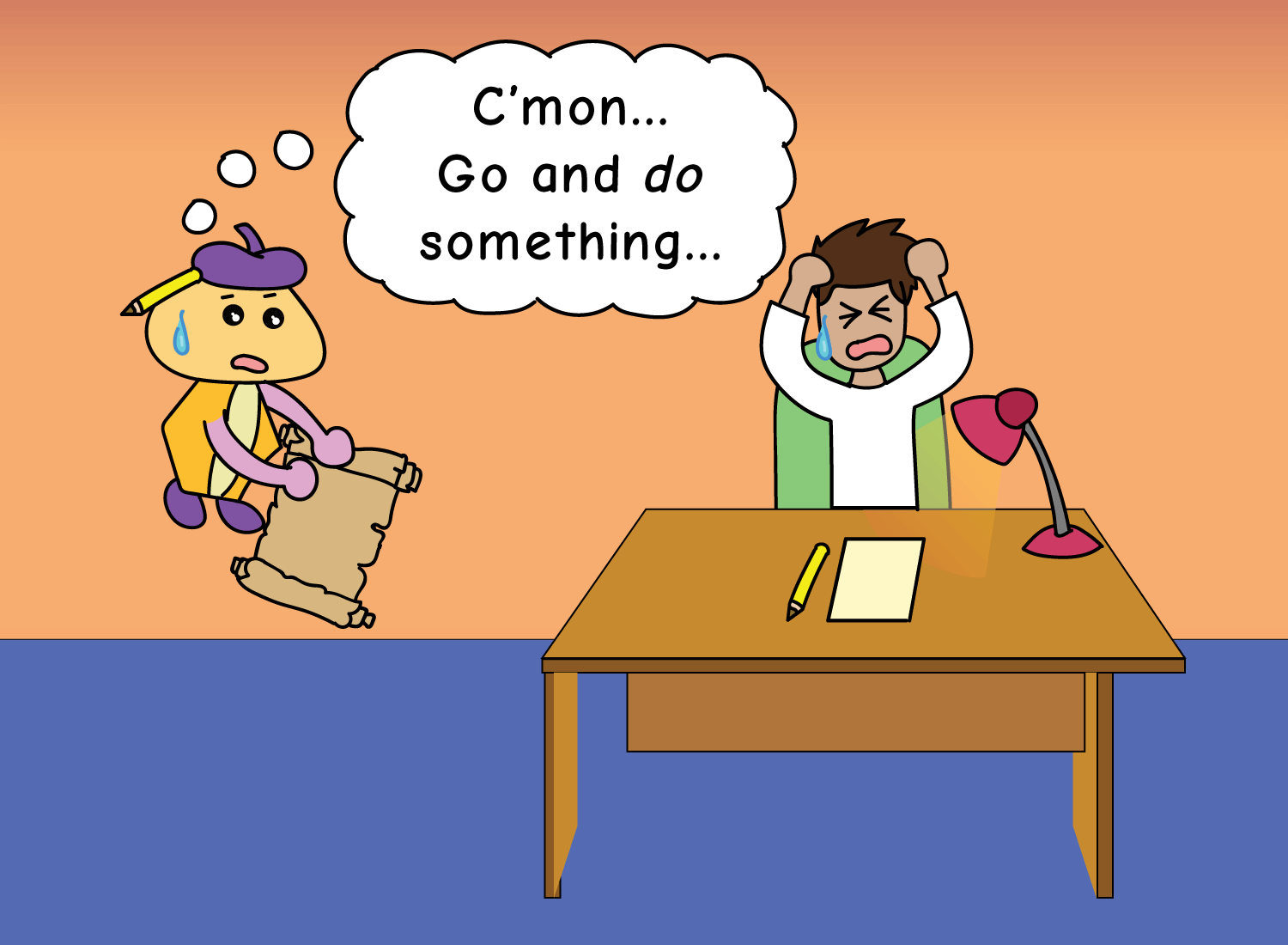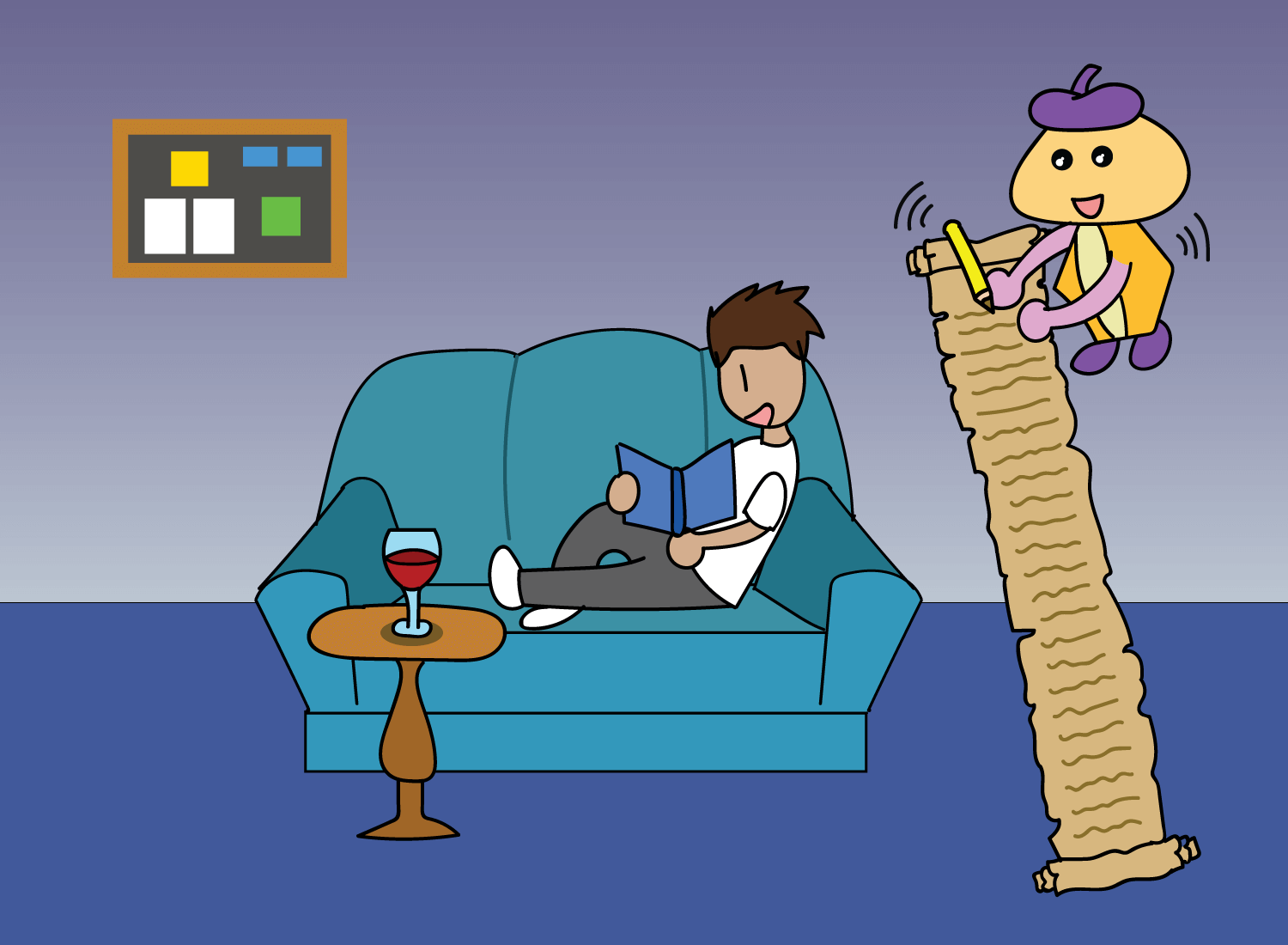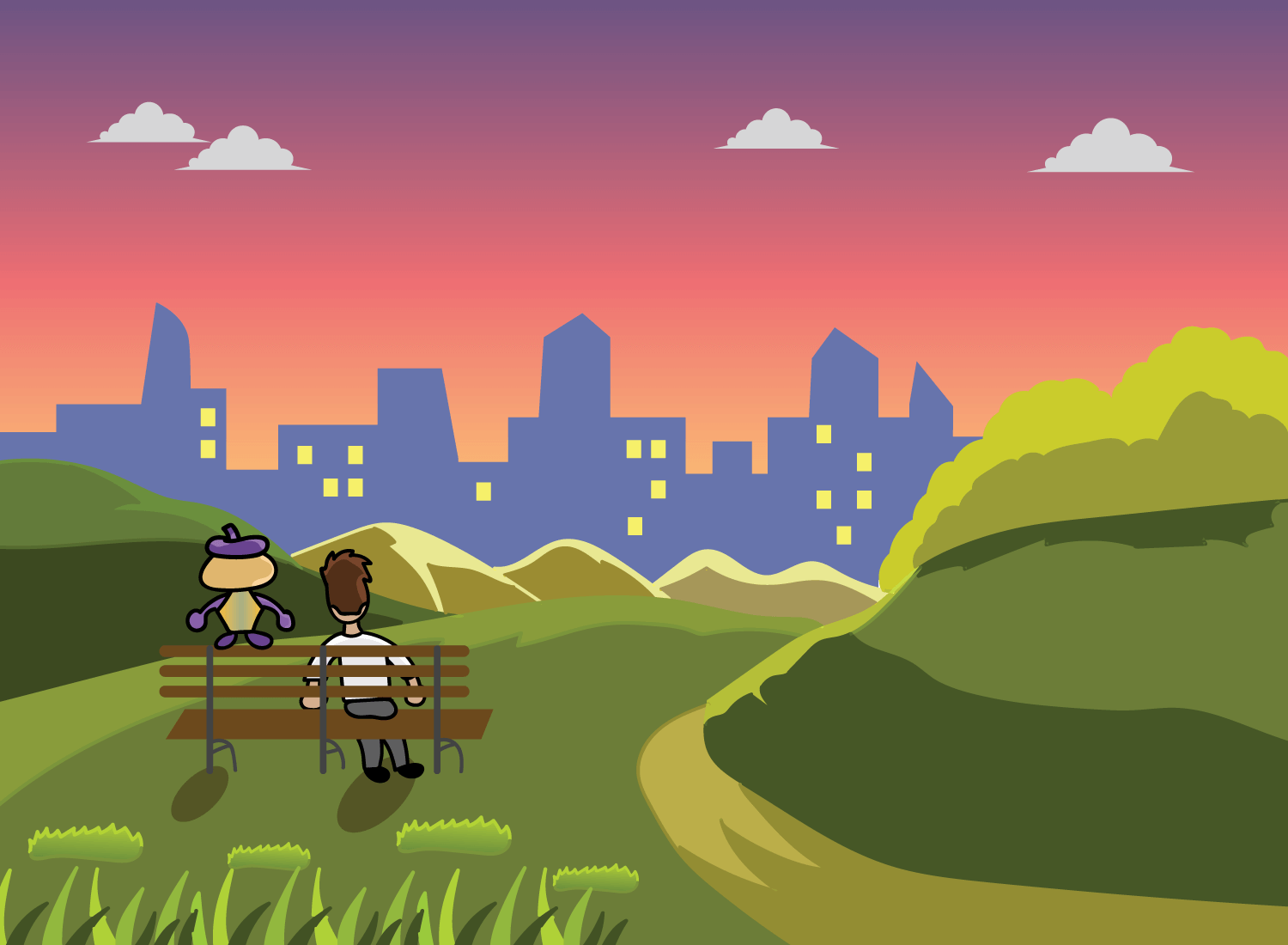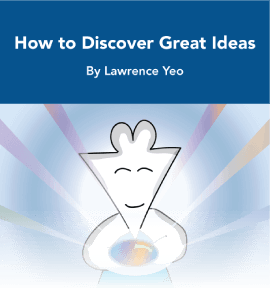Creativity Starts Before Anything Is Made
This is Stan.
And this is his friend, Creativity.
Stan loves spending time with Creativity, but unfortunately, he spends much of his week at a job where Creativity doesn’t seem to be allowed.
Stan’s favorite part of the day is when he gets to return back home to finally reunite with his friend. And together, they work on making the things that he finds so meaningful and fulfilling.
When Stan returns back to work the next morning, he laments the fact that Creativity is nowhere to be found. He wonders why he’s spending 40+ hours a week at a place that is devoid of the thing he cares about most. He feels that he’s letting valuable time slip through the cracks, and perhaps now is the moment to do something about it.
After reviewing his financial situation and seeing that he has enough, he decides to take a deep breath and make the leap.
He hands in his resignation letter. It’s over. He packs up all his stuff, and gets into his car.
A rush of excitement takes hold. Finally, he can have Creativity all to himself, and they could hang out whenever he’d like.
The next day, Stan wakes up early, and sees Creativity waiting for him at his workspace. They give each other a high-five, and from the beginning, are completely in-sync. Creativity is with Stan throughout the entire day, and wonderful art is made for hours on end.
Stan can’t believe it. If this is what it’s like to have Creativity with him all the time, then everyday would be an opportunity to get so much done.
Since Stan is a disciplined guy, he blocks out a set number of hours each day to sit down in front of his notebook and get to work. The first week of this new schedule runs smoothly – whenever it’s time to make something, Creativity is there and everything flows without question.
Stan manages to keep up this daily routine for a number of weeks, and everything is going well.
But one day, something weird happens.
Stan gets up, arrives at his workspace at his predetermined time, sits down to start, but then it hits him:
He has no clue what the hell he wants to make.
This is strange. Not only is his mind blank, but he also can’t seem to locate his friend either. Usually they would arrive at the same spot, at the same time, everyday.
Did Creativity forget about their appointment? Maybe it’s still sleeping?
Stan tries to go at it alone, but no matter how much he thinks, nothing substantive comes to mind. He decides to call it a day early, and vows to try again the next day.
The next day, he wakes up to a relieving sight. Creativity is sitting in front of his notebook, patiently awaiting Stan’s morning arrival.
Stan sits down, smiles, and the gears start spinning. He’s relieved to know that Creativity didn’t desert him after all.
However, just an hour later, the strange feeling hits him again. All of a sudden, he runs out of steam, and feels like he has nothing more to contribute to this project. He knows it’s not done yet, but he looks up to see that Creativity has left him right in the middle of the session.
It was there just a moment ago, but now it was gone.
He tries again the next day, but gets the same result.
And sadly, it happens the following day as well.
In fact, this goes on for the entire week.
Now Stan is beginning to get worried. He thinks to himself:
What was the point of quitting my job to do this, when I’m not spending 8 hours each day on it? I should have just kept my job and reserved this for the evenings like before. At this rate, I would be spending the same amount of hours on my creative work in both scenarios anyway…
Frustrated, Stan decides to spend the day at a nearby park, bringing a book with him to keep him company. He finds a nice, shaded bench on this beautiful sunny afternoon, sitting atop a small hill that overlooks a familiar city skyline. He’s been to this park many times before, but for some reason, today he feels compelled to take a closer look at his surroundings.
He surveys the landscape, and his eyes are drawn to the blades of grass that cushion the feet of humans and animals alike. The innumerable blades sway back and forth, dancing to the gentle rhythm of a wind that ebbs and flows. He can’t quite understand why this simple sight is so beautiful, yet he feels it viscerally.
Nostalgia then sweeps through him. He’s reminded of all the times his childhood friend would join him at this very park, chasing him through the patches of green that have now turned yellow. Those were simpler times, and even amidst the increasing complexities of life, their friendship continued to grow, and they remain best friends to this day.
Thinking about this, Stan decides to pick up the phone and give him a call. They spend the next hour sharing stories, laughing at childhood memories, and reflecting on how life has changed for them over the last few years.
It was a wonderful way to spend the afternoon.
After a nice day out, Stan returns back home, ready to start unwinding and preparing for a new day. However, when he gets back, look who’s waiting in his workspace, patiently waiting for him to come home:
What the hell?! Why didn’t Creativity show up when he needed it most, and instead it’s showing up when he’s getting ready for bed?
Matter of fact, what’s Creativity’s deal here?! Why has it been perpetually absent over the past few days? Has it been avoiding him the whole time?
These are all interesting questions, but in asking them, Stan is missing something important here:
He is unaware that creating things is just a small part of what Creativity is all about.
Stan believes that Creativity starts and ends with the time they spend working on things with each other. That it lives in the space between the moment he opens his notebook and the time he closes it.
But in reality, that’s only the final stage of Creativity’s entire routine.
Most of Creativity’s time is spent following Stan around as he lives his day-to-day life. Even if Stan doesn’t realize it, Creativity is always in the background, observing what he’s doing and taking note of everything that’s going on. Whether it arrives in the form of experience or knowledge, Creativity is there to document whatever is happening at various times.
For example, when Stan was at the park, speaking with his childhood friend about the course of their lives, Creativity was there to take note of what he was thinking:
Whenever Stan is enjoying a book and engaging with the author in this way, Creativity is there to keep track of what he’s learning:
And even when Stan was at his boring old job, Creativity was there observing what he was pondering. His very disillusionment with his work was providing a breadth of ideas and reflections that Creativity would then store in its running document of experiences.
But of course, Creativity does more than build this list, as that is something that memory can do as well. What makes Creativity special is that it works with Stan to then compress this list into a shape that is unique to his abilities and perspectives.
Stan didn’t realize this at the time, but whenever he sat down with Creativity to make something, this was what he was doing. He was working with Creativity to distill the breadth of his experience and knowledge into its essence, which would then drive the nature of what he created that day.
We tend to believe that the act of creating is what defines creativity, but creativity starts long before anything is made. The first word you write is a distillation of the knowledge you’ve accumulated over time. The first brushstroke you paint is a reimagining of the experiences you’ve stored somewhere in the mind.
While Stan was working at his old job, Creativity was building out an extensive list for him. But since he wasn’t investing the time necessary to compress it regularly, the list went largely untouched. A vast resource was accumulating, but nothing was processed or cultivated.
So when Stan first left his job, this untapped list was essentially gifted to him. This is why Stan was able to spend entire weekdays making things with ease. There was so much to sift through, so much for him to distill.
But after weeks of output without adding any new experiences of his own, he soon had nothing left in the tank. When Stan arrived at his notebook that day to find Creativity missing, it wasn’t actually gone.
It was hovering in the background, hoping that Stan would give it reason to take out its notepad and document things for later.
We often glamorize Creativity as this whirlwind of activity that culminates in greatness. We think of the artist in the studio, working hours on end to build something that will stand the test of time. The musician that records until the crack of dawn, searching whimsically for the perfect melody.
While some of this may be true, it is usually what you don’t envision that drives much of the creative process.
What you don’t see are all the days where these creators are far away from their canvases or computers, doing things that seem to have nothing to do with their work. The time they spend dining with a friend, watching a documentary with their family, reading a book while having a glass of wine. All of this may look like play, but in reality, these are all contributions to Creativity’s growing list of experiences.
The part that Stan gets right is that he shows up everyday, ready to create. After all, this is the only way to ensure he’s available to process things when Creativity is ready to go.
The part that Stan gets wrong, however, is thinking that showing up is all that matters. It doesn’t matter how much he shows up at 9 AM everyday if there is nothing to draw upon and compress. Creativity can be regularly cultivated, but it cannot be mechanized. He can grow it over time by building habits around it, but he can’t use time itself to conjure it into existence.
Using a 40-hour workweek to measure creativity is like using a 12-inch ruler to measure happiness. There is a fundamental mismatch between what the tool is designed to measure, and the object of measurement itself. What is the point of making stuff for 8 hours a day if you’re doing it for productivity’s sake? Is that any different from a dull job that requires you to do the same task, at the same time, every single day?
What Stan needs to realize is that a disciplined approach to making things is just one part of the puzzle. The other part is about simply living his life, and having the freedom to explore his surroundings and interests. Going to the park and chatting with his friend was far more helpful for Creativity than any number of hours staring at a blank notebook could have been.
When Stan understands that creating is just one part of the creative process, he will no longer be disheartened when he feels like he has nothing to make. Instead of desperately trying to get something out, he will notice this tension, and take it as a sign to step away from his workspace for a bit.
In doing so, he pivots his attention outward. He commits to expanding the scope of his experiences, allowing him to take in all the interesting things that the world has to offer.
And Creativity will be right there with him, every step of the way.
_______________
_______________
Related Posts
Starting the creative process is one thing. Knowing how to end it is another:
One of Creativity’s toughest enemies is Self-Doubt. Here’s how to beat it:
For an in-depth look into my own creative process as a storyteller:
